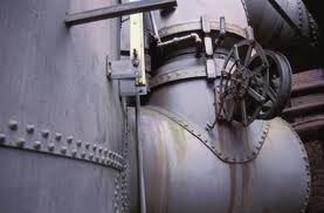
A safety relief valve is used to prevent the interior pressure of a heater from explosing or causing other dangerous situations. The size and design of a safety relief valve is important for industrial process safety. Here are some guidance for sizing a steam safety relief valve.
More Instructions
1), Decide all of the credible overpressure scenarios for a steam boiler. This will be the basis for the sizing of the valve. For example, in a natural gas boiler the gas burner could malfunction, causing excessive heat for boiling the water.
2), Decide the maximum steam generation capacity and the maximum pressure rating of the boiler. For example, assume the boiler has a maximum steam generation of 50,000 pounds per hour with a maximum pressure of 300 psi and a temperature of 422 degrees Fahrenheit.
3), Decide the minimum required orifice size of the valve using the formula from API 520. The formula is A = W/(C x Kd x P x Kb x Kc) x √(T x Z)/M where A is the orifice area in square inches, W is the steam generation, C is a steam coefficient equal to 330, P is the pressure, Kd, Kb and Kc are all constants equal to 1.0 in this case. T is the temperature of the steam, Z is the steam compressibility factor (assume it is 1.0) and M is the molecular weight of the steam, which is 18.01. This calculates out to be 2.44 square inches.
More Instructions
1), Decide all of the credible overpressure scenarios for a steam boiler. This will be the basis for the sizing of the valve. For example, in a natural gas boiler the gas burner could malfunction, causing excessive heat for boiling the water.
2), Decide the maximum steam generation capacity and the maximum pressure rating of the boiler. For example, assume the boiler has a maximum steam generation of 50,000 pounds per hour with a maximum pressure of 300 psi and a temperature of 422 degrees Fahrenheit.
3), Decide the minimum required orifice size of the valve using the formula from API 520. The formula is A = W/(C x Kd x P x Kb x Kc) x √(T x Z)/M where A is the orifice area in square inches, W is the steam generation, C is a steam coefficient equal to 330, P is the pressure, Kd, Kb and Kc are all constants equal to 1.0 in this case. T is the temperature of the steam, Z is the steam compressibility factor (assume it is 1.0) and M is the molecular weight of the steam, which is 18.01. This calculates out to be 2.44 square inches.
 RSS Feed
RSS Feed